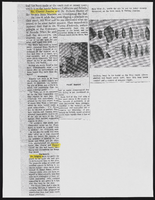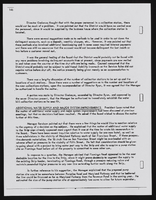Search the Special Collections and Archives Portal
Search Results
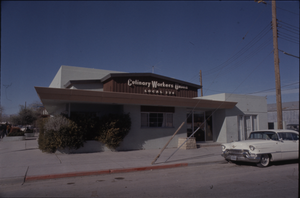
Glass slides of the Culinary Workers Union Local 226 offices and various local buildings, Las Vegas (Nev.), 1950s-1960s (tray 3 of 3)
Date
Archival Collection
Description
Slides collected by the Culinary Workers Union Local 226 depict the Union's offices and other buildings in Las Vegas during the 1950s and the 1960s. Images include exterior views of the Union's building, construction sites, hotels, and restaurants, and aerial shots of Las Vegas. Also included are images depicting activities inside an office, likely the Culinary Union's office. Tray 3 of 3. The original slides were retained by the Union.Arrangement note: Series V. Glass slides
Image
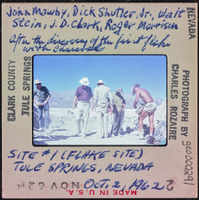
Photographic slide of people at Tule Springs, Nevada, October 2, 1962
Date
Archival Collection
Description
Image
Ora Bland oral history interview
Identifier
Abstract
Oral history interview with Ora Bland conducted by Claytee D. White on March 04, 2021 for African Americans in Las Vegas: a Collaborative Oral History Project.
Ora Bland speaks to what she knew of her husband's secretive work at Area 51 of the Nevada Test Site, businesses in the Westside community, and her work in the downtown Las Vegas post office. In addition to her life experiences, Ora shares her thoughts on her community, the state of homelessness that many experience in her surrounding neighborhood, and her activities during the COVID-19 pandemic.
Archival Collection
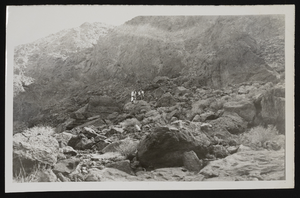
Photograph of two men on a mountain, Hoover Dam, approximately 1930-1933
Date
Archival Collection
Description
Image
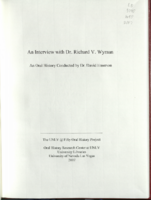
Transcript of interview with Dr. Richard V. Wyman by Dr. David Emerson, February 27, 2006
Date
Archival Collection
Description
Text

Interview with Cecil C. Garland, July 19, 2006
Date
Archival Collection
Description
Text

Interview with Edward Bonfoy Giller, April 5, 2005
Date
Archival Collection
Description
Text

